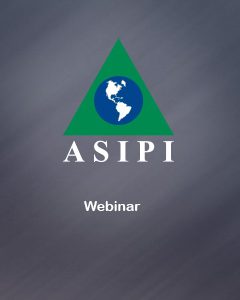On May 4, the webinar "Intellectual Property as a vehicle for partnership and generation of development in communities" was conducted by Mr. Alexander Parra Peña, attorney of the Development and Strengthening of the Handicraft Sector at Artesanias de Colombia.
Mr. Alexander Parra talked about the importance of associativity, pointing out that craftsmanship is a sector with many opportunities, since Colombia is a mega diverse country with immaterial and multicultural heritage complemented by the strong development of market strategies worldwide.
Mr. Parra mentioned that the Ministry of Industry, Commerce and Tourism seeks to provide the craft sector with the legal tools in industrial property, to implement the use of collective marks, certification and appellations of origin, as well as to strengthen innovation and commercialization of the emblematic handicrafts for its positioning in the national and international market.
Mr. Parra said that to date there have been awareness-raising and training activities, legal technical study and legal protection, association, promotion and marketing of the distinctive signs and constant monitoring and evaluation, resulting in 75 communities served.
He also mentioned that artisan communities have been able to acquire knowledge about their intellectual property rights and their potential for crafts, have legal tools that strengthen their competitive advantages in the market, and participate in an associative way with their products in events and fairs for its positioning and commercialization.
Registered Signs
Mr. Parra pointed out that Colombia has registered 12 artisan appellations of origin, namely: (i) Guacamayas, (ii) Tejeduría Wayuú, (iii) Sombrero Aguadeño, (iv) Cerámica Ráquira, (v) Tejeduría Zenú, (vi) Mopa Mopa, (vii) Sombrero de Sandoná, (viii) Sombrero Suaza, (ix) Tejeduría de San Jacinto, (x) Queso Paipa, (xi) Cerámica Carmen de Viboral, and (xii) Bizcocho de Achira del Huila.
They also have 53 collective marks and 2 registered certification marks. To date, the following collective marks are in process: La Chamba, Filigrana of Mompox, Werregue Wounaan, Mochila Arahuaca, Carrieles de Jerico, Palo de Sangre. The first registered collective mark was that of Cerámica Negra de La Chamba, registered in 2010 by the association Cooartechamba, made up of 232 artisans. As a way of making it viable, the brand offers a tourist route, which includes experiential tourism by visiting the community of La Chamba.
Agreements
Mr. Parra indicated that access to the registration of trademarks in Colombia was very costly, especially for artisans, and because of the agreement between Artesanías de Colombia and the Superintendency of Industry and Commerce, artisans can register their brands at a price of 70 thousand pesos, when before the amount amounted to 1 million pesos.
Steps to follow
Mr. Parra mentioned that the Ministry of Industry, Commerce and Tourism continue their constant work, so it has as its goals the following actions:
- support for associativity,
- Continue to work with artisans in the use, promotion and legal protection of registered signs,
- work with the international support of COLIPRI-OVOP (JICA),
- the use by the craftsmen of the stamp "DOP" and its other distinctive signs in commercial events,
- the study on the impact of the use of PDOs on Colombian handicrafts,
- document Industrial Property guidelines in the craft sector,
- review of dominicos on the internet and supporting the creation of new online business pages, as well as strengthening territorial marketing and promotion.
The participants' questions webinar on the protection of handicrafts through distinctive signs enriched the webinar.
View recording



